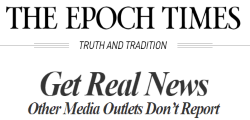We support our Publishers and Content Creators. You can view this story on their website by CLICKING HERE.
More than 17 million people have voted so far, election data show.
While Democrats have an advantage in early voting so far, Republicans appear to have embraced casting their ballots early compared with four years ago, according to newly updated data.
Republicans have taken the lead over Democrats in early in-person voting as of Tuesday morning in states that report such data, although Democrats have a clear edge in terms of voting by mail.
In the states where voters register by party, about 38.8 percent of early voters are Republican, whereas 34.4 percent are Democrat. The rest, 26.7 percent, are unaffiliated, the data show.
Democrats also make up 48.5 percent of returned mail-in ballots, compared with about 31.3 percent of Republicans for the 2024 election, Tuesday’s data show.
Voting by mail was heavily promoted in the 2020 contest amid the COVID-19 pandemic, which prompted stay-at-home orders, lockdowns, and other mandates and recommendations.
“Until this point, registered Democrats have dominated the early voting period on the strength of their higher mail ballots request rate and return rate advantages. Both of these patterns are different from prior elections where registered Republicans tended to request more mail ballots and return them at a higher rate,” McDonald wrote on Oct. 18, 2020.
Other 2024 Data
In states where party registration has been recorded, about 1.9 million people have voted in person early, and some 6.9 million have returned mail-in ballots, according to the election lab. Overall, 6.6 million have voted in person early and nearly 11 million have voted by mail.
McDonald wrote on his Substack page that any conclusions made about early voting should be taken with a grain of salt.
“In-person early voting began this week in the battleground states of Georgia and North Carolina, both racking up records for the first day of in-person early voting,” he wrote.
Numbers will continue to “accelerate quickly” for this week as several other states begin early voting, McDonald said.
Swing States
Swing states Michigan, Wisconsin, and Georgia do not include party registration data. But North Carolina, Arizona, Georgia, Pennsylvania, and Nevada include that information.
About 50 percent of in-person early voters are Republican, whereas 29.6 percent are Democrats in the Silver State. For mail-in ballots, 42.9 percent are Democrat and 29.9 percent are Republican, the data show.

 Conservative
Conservative  Search
Search Trending
Trending Current News
Current News 







